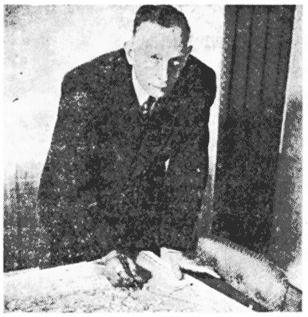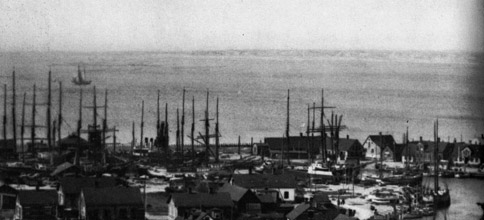
All that is fluid becomes solid
Föreläsning om landskap och ekonomi
Historien tar sin början med mjölkförpackningen Tetrapak och utsikten från fiskeläget Råå spelar en avgörande roll. Föreläsningen hölls på avdelningen för landskapsplanering vid Sveriges Lantbruksuniversitet i Alnarp våren 2007. Den har sitt ursprung i en text för Danmarks Arkitekturcenter Gammel Dok år 2000.
For a long time, the flow of milk was almost as disorganised as the air currents. The idea had not yet been developed that the flow could be controlled and organised, making it more easily managed, that is: less liquid – and more sellable. A dry and leakproof surface around the milk would make the milk’s surface area much larger: The huge terrae incognitae that used to be found on the Map of the Milk Flow, that is: tracts without milk, would open themselves to cultivation and control. New lands could be covered with milk. Warm areas without refrigeration, where milk used to be a meaningless idea because of spoilage – microorganisms hitherto being the stronger part – these areas can now be transformed into virgin soil, anxiously awaiting the milkman.

Ruben Rausing initiated the invention of the packaging machine for the Tetra, the little tetrahedral milk container in 1943, at a time when milk was still sold in bulk in most places. On the other hand, packaging milk was not a totally earth-shattering novelty as such: Glass bottles for milk had already been introduced in some cities. Other types of packaging systems also began to be developed alongside the Tetrapak. But the problem with the other packaging methods was that they halted the flow of milk: the flow was stopped for each package, and a small gap of a few seconds appeared – an operational inefficiency! But it also created limits in terms of the milk’s use and its distribution in time and space. The interval created a small air pocket, which limited the shelf life of the milk. Despite otherwise leakproof packaging, the milk could not be stored for long, especially in hot climate. Good transportation conditions were required, which determined the size of the geographic arear over which it could be distributed.
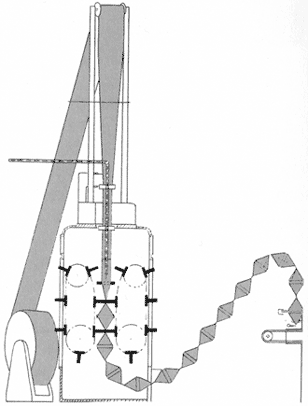
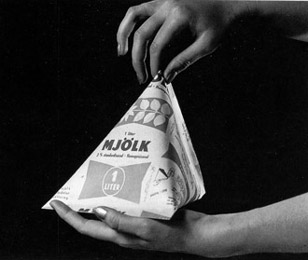
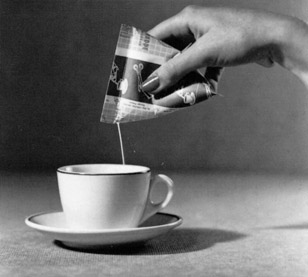
The ingenoiusness of the new Tetrapak design was in its relation to the flow of milk. The solution was to design a packaging method without any gaps. A continuous filling process, where the milk flowed constantly under a protective surface. The milk ran through a cylinder, over which a sheet of paper extended from a roll. The flowing paper was folded into a Tetrapak around the continuous milk flow – without having to stop the flow. One continuous surface (the paper), that was folded around another continuous surface (the milk). Both were cut off simultaneously, to the desired size.
Ruben Rausing left his original humble environment, and humble origins (his father was a whitewasher!), in the fishing village along the Sound. Rausing saw the opportunities that lay in transforming the flow. To identify the important flows, and see how they can be grasped to create usable surfaces to work on – the kind that provide a return on investment. His desire was to package the world.
The ironic thing with bourgeois desire is, in Marx’s view, that the bourgeoisie cannot take the full advantage of the opportunities they possess. It is not the business activities in and of themselves that mean anything, but only accumulating capital. All of their businesses are only of transient and intermediary interest. And there is an irony in this: they accumulate capital and erect their monuments – which, after writing off, are immediately torn down and replaced with something new. But Marx overestimates (or underestimates, if you wish) his objects of study to some extent: They, his bourgeoisie, they are actually doing the best they can; intention has no irony. A person like Rausing really wants to make the world around him fixed and beautiful. For himself, for his family, maybe even for descendants to come.
Dam in the flows and drain the fleetingness of uncertainty, once and for all. A simple task – if he were alone and without competition. But life is a crowded thing – he is amongst all those others who want and strive for the same thing. What is required is creating a large enough space for oneself, a sufficiently large surface to lay out personal projects. A transformation from constant movement and fluidity to long-term, solid stability is not only conceivable, it is perhaps a natural and logic process. Everything bears its opposite, as the Marx saying goes (or something like that!). We could also call it modernity’s paradox of change: “Technology”, says the french sociologist Bruno Latour, “technology is society made durable”. Stable social conditions cannot be achieved using solely social elements. As long as it is only social power that is considered, society will not become more stable or technically advanced than a group of baboons or chimpanzees. “Technology is society made durable”, in other words: The more technology, the greater the durability – more technology equal less change...!
For hundreds of years, the waters of the Sound have divided the main regions of the Danish kingdom, since its establishment in the Viking era. During the last decades of the 19th century, plans for a secure connection across the Sound took the form of projects for bridges and tunnels (and now, at this point, one side, as you may know, belonged to another country, Sweden). Discussions intensified during the 1930’s, and construction was close – but then the war stepped in. After the war, the discussions could continue, even though the political map was even more complicated now than before (because of the Cold War and its imminent threats and suspiscions).
On Wednesday, March 25th, 1953, a long article appeared on the front page of Dagens Nyheter. It appears that the newspaper had come across the story of a completely new proposal to solve the problem of creating a fixed connection across the Sound.
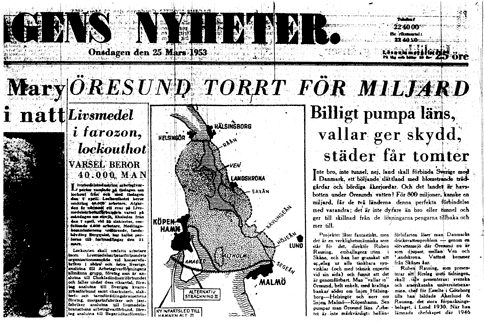
The headlines read:
BILLIONS TO DRAIN THE SOUND
PROTECTING EMBANKMENTS –
NEW BUILDNING GROUNDS FOR CITIES
WHY NOT A LAND BORDER WITH DENMARK?
The article that follows says: “The profits, which can barely be calculated, would be enormous. Denmark and Sweden would have solid land border, and each side would get a part of newly won land to colonise. Copenhagen and Malmö would get elbowroom to grow towards each other until they meet out on the former seabed. New concepts of beauty will be created instead of the old ones, which the land reclamation will unavoidably destroy. New cities and communities are envisioned along new traffic roadways set on the muddy bottom of a Sound that will be tranformed into a blooming, garden-like landscape.”
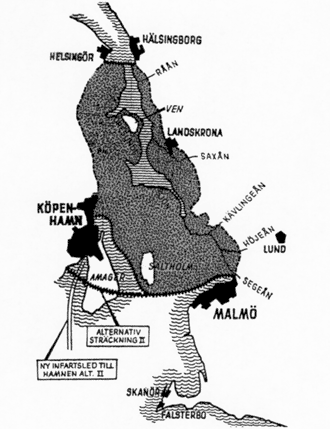
The author was Ruben Rausing. He wrote the article himself (!), and in it, he also admits that completing the project could create a number of difficulties, such as losses for the shipping and fishing industries, the loss of a large harbour (Landskrona), military questions as well as environmental considerations. But he quickly moves on to point out other possibilities, for example, planned vacation areas on the Baltic Sea and the Cattegat along the outside of the embankments, “facing the fresh and deep water”. “I can imagine”, concludes Rausing’s reasoning, “what Danish architects would be able to do with these opportunities.”
In terms of connections, the Sound was, and is, an unwanted flow in the ground traffic. It’s sometimes said that waters used to connect rather than divide back in historical times. But naturally, even Canute the Great, the Danish king who established the cross-waters east-west mini empire including England, even he would have seen the advantages of a continuous construction from the west to the east. Dry areas are the common object of desire. The wetness of the sea has no other function for humankind than: romance. Even a sailor wants to keep his cargo and his feet dry.
Crossing the Sound with closer connections would (for Canute the Great or Rausing) at least involve creating a dry transportation route piece by piece, broken into intervals, like a few times per hour on the small dry surface of a boat. A great opportunity lies in making the dry surface continuous, which is the purpose of bridges and subaqueous tunnels. From a surface with a lot of creases and cracks (that is, boats and their departures, shifting waters) to a smoother, more continuous surface.
Rausing explains that he was, initially, thinking about the transportation routes and their surfaces – how they could be better arranged with road embankments. And then the thought struck him: why not stretch out the surface area?
If a little bit of the bottom beneath the water (a very oblong section, obviously) could be used to become the bottom under a road embankment – why not another use for the other fields under the water? A large and uncontrolled flow can be turned into something stationary, cultivable and coverable.
“Not a bridge, not a tunnel; no, land will connect Sweden with Denmark, a rolling plain with blooming gardens and fertile fields. And that land is the sea bottom beneath the Sound!”
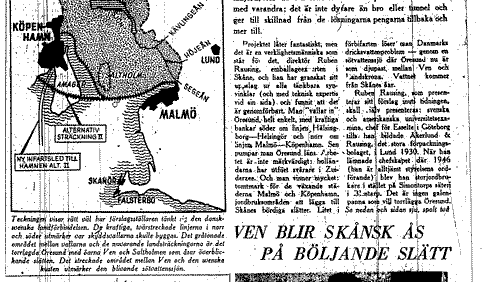
It is magnificent modernity: An enormous change, a total transformation – to produce a stationary surface, to manufacture non-change! The greatest change and the greatest fixture meet. The transformation from change to non-change involves another shift as well. You can see that it is not a matter of “transient interest”. This aims at something rather more long-term than the actual tranformation in itself.
Look at the map illustration again: A lake has been drawn in the middle of the embanked area. It has a clear technical function in the project: The run-off from the streams on the Swedish side and from rainwater is collected here to supply houses with fresh water, which is a scarce resource in the 1950’s – completely rational, a large, modern reservoir. But the form of the lake, made by an unknown artist, speaks a different language. An archaic figure, more “lake-like” than actual lakes. The intention appears to be to provide as many picturesque views as possible. The artist has not forgotten to use the landscape elements available: ’The island of Hven becomes a ridge on rolling plains”, says the Dagens Nyheter article, referring to the use of the existing landscape elements: The islands in the Sound are situated like ridges within the larger landscape, and the effect of Hven is especially powerful, out on a point, with water reflecting on three sides. It looks like a sketch for an English parkland.
But while the grand scheme of packaging the world can be sold bit by bit, packaging machine by packaging machine, plant by plant, draining the Sound cannot be sold that way. The new landscape is one package, one machine, one plant, that must be communicated in one piece – therefore it unavoidably becomes a question of politics. And thereby controversial in a way which milk packaging machines are not.
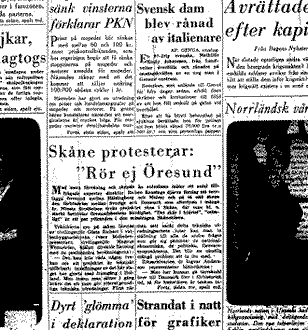
The next day, March 26th, 1953, the project was sunk. Both in Dagens Nyheter and in the regional newspaper Sydsvenska Dagbladet Snällposten (which, by the way, failed to get a hold of the scoop). Dagens Nyheter did a little poll among experts, and the comments were either – ironic or patronizing... A history professor views it as a chapter in a fantastic novel, a director-general explains how commando troops or planes will breach the embankments, and the entire area will be flooded.
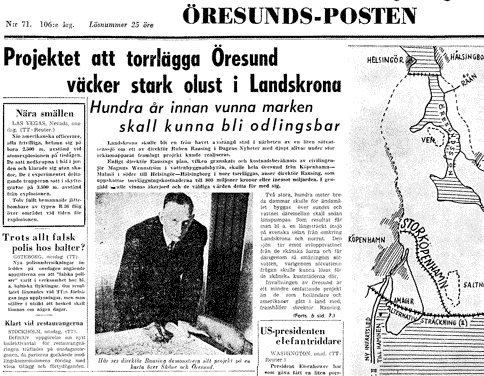
’The proposal is completely unreasonable” explains the shipyard manager in Landskrona. Facing the prospect of his boats ending up in the middle of a plain, he speaks ironically: ’It is clear that Mr Rausing’s packaging firm in Lund is not going bankrupt because of draining the Sound. When a person dreams on a fantastic scale, he naturally loses sight of the petty local interests!”
Rausing’s project for the Sound is an impossibility, because it is: pure arrogance. You have to think twice about the way you conquer the world. If a person like Rausing goes so much beyond other people’s incidental undertakings, buildings, small monuments of themselves (the monuments which they, according to Marx’s description of unintentional bourgeoise irony, build, write off and tear down the next day), if Rausing goes so much further, the other competitors may feel like it is an intrusion on their space – a trespass.
The person who carries forward a personal desire to create land gets closer to the unapproachable; one of the most extreme and monumental signs of modernity. Regardless if it is democratic Holland or fascist Italy (both of which completed large land reclamation projects during the 20th century), these were not done in the name of someone, but in the name of progress for an entire society. To create land can be seen as the utmost monument – an ultimate monument. It seems that we can permit a society to mark an increasingly advancing modernity by creating what in a more ’backward” (speking in modernist terms, then) conception belongs to God, and God only. The greatest change to create the greatest unchangeability.
Rausing countered the unisonally critical commentaries of his adversaries by pointing out that land reclamation projects had already been done in Holland, and that the only thing that actually happened was that ’a completely new type of beauty” was created. To his employees, he confided: ’They are only idiots who don’t know what they are talking about. They shouldn’t be taken seriously!”
